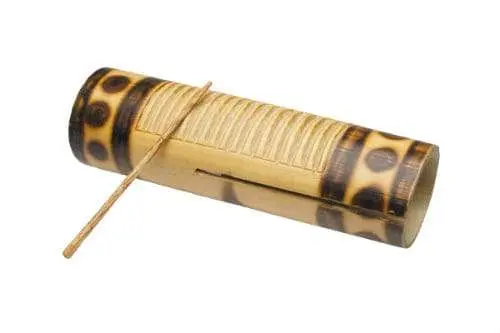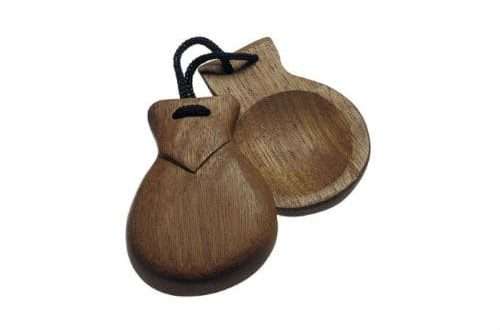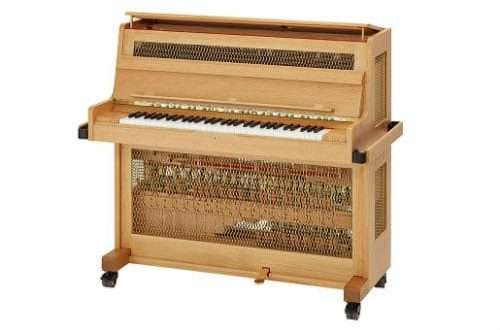
River-river: instrument composition, varieties, use, sound production
At carnivals in Brazil, in the festive processions of the inhabitants of Latin America, in Africa, a river-river sounds – the oldest percussion musical instrument of African tribes.
Overview
The design of the ancient reco-reco is very simple. It was a bamboo stick with notches. Sometimes, instead of bamboo, an animal horn was used, on the surface of which grooves were cut. The performer took another stick and drove it back and forth along the notched surface. That’s how the sound was made.

The instrument was used in ritual rituals. With the help of such an idiophone, representatives of the tribes turned to the spirits of the Orisha in order to cause rain in a drought, ask for help in curing the sick, or support them in military campaigns.
Today, several modified river-rivers are used. Brazilian resembles a box without a lid with metal springs stretched inside. They are driven with a metal stick. An idiophone resembling a vegetable grater is also used.
Varieties
There are several species related to the river-river. The most common variety in Angolan musical culture is the dikanza. Its body is made of palm or bamboo.
During the Play, the musician extracts sound by scratching the transverse notches with a stick. Sometimes the performer puts metal thimbles on his fingers and beats the rhythm with them. Dikanza differs from the Brazilian river-river in length, it is 2-3 times larger.
The sound of this idiophone is also popular in the Republic of the Congo. But there the percussion musical instrument is called “bokwasa” (bokwasa). In Angola, the dikanza is considered part of the national musical identity, a unique piece of people’s history. Its sound is combined with other percussion instruments, kibalelu, guitar.
Another kind of river-river is guiro. It is used by musicians in Puerto Rico, Cuba. Made from gourd gourd. Other materials are also used. So for the accompaniment of salsa and cha-cha-cha, a wooden guiro is more suitable, and metal is used in merengue.
Traditionally, the sounds of the river-river accompany carnival processions. Capoeira fighters also show their art to the accompaniment of the sounds of the ancient Brazilian idiophone. It is also used by modern instrumentalists. For example, the singer Bonga Kuenda uses dikanza in recordings of his compositions, and the composer Camargu Guarnieri assigned her an individual role in a concerto for violin and orchestra.





